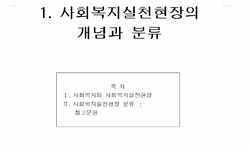According to Legge, Faxian wrote: Proceeding 18 yojanas southeast [from Mathurii and 7 yojemas from Kanauj, which he visited next], they found themselves in a kingdom called Sankasya, at the place where the Buddha came down, after ascending to the Tra...
http://chineseinput.net/에서 pinyin(병음)방식으로 중국어를 변환할 수 있습니다.
변환된 중국어를 복사하여 사용하시면 됩니다.
- 中文 을 입력하시려면 zhongwen을 입력하시고 space를누르시면됩니다.
- 北京 을 입력하시려면 beijing을 입력하시고 space를 누르시면 됩니다.
https://www.riss.kr/link?id=A99839510
- 저자
- 발행기관
- 학술지명
- 권호사항
-
발행연도
2005
-
작성언어
-
-
주제어
구법승 ; 상카시야 ; 아쇼카 석주 ; 도리천 강하 ; 법현 ; 현장 ; Far Eastern Pilgrims ; Sankasya ; Asokan capital ; the Buddha's Descent fromTrayatrimsa ; Faxian ; Xuanzang
-
등재정보
KCI등재
-
자료형태
학술저널
-
수록면
188-207(20쪽)
- 제공처
- 소장기관
-
0
상세조회 -
0
다운로드
부가정보
다국어 초록 (Multilingual Abstract)
According to Legge, Faxian wrote: Proceeding 18 yojanas southeast [from Mathurii and 7 yojemas from Kanauj, which he visited next], they found themselves in a kingdom called Sankasya, at the place where the Buddha came down, after ascending to the Trayatrimsa heaven… The bbirsuni Utpalavarna thought in her heart, "Today the kings ... will all be meeting the Buddha. I am but a woman; how shall I succeed in being the first to see him?" Buddha immediately ... changed her into the appearance of a holy cakravartin king, and she was foremost of all in doing reverence to rum. As Buddha descended from his position aloft in the Trayatrimsa heaven, when he was coming down, there were made to appear three flights of precious steps. Buddha was on the middle. composed of the seven precious substances. The king of Brahma-loka also made a flight of silver steps appear on the right side, where he attended with a white chowry in his hand, Sakra, ruler of devas, made steps of purple gold on the left, where he held an umbrella "" When he was come down, the three flights all disappeared in the ground, excepting seven steps ... Afterwards King Asoka, wishing to know where their ends rested, sent men to dig and see, They went down to the yellow springs [the water table] without reaching the bonom of the steps, and from this the king rceived an increase to his reverence"" [Asoka] built a vihara over the steps, with a standing image 16 cubits in height, right over the middle flight. Behind the pillar, he erected a stone pillar, about 50 cubits high, with a lion on the top of it. Let into the pillar, on each of its 4 sides, there is an image of the Buddha, inside and out shining and transparent, and pure as it were of lapis lazuli [which roared in a later monastic debate], Faxian also reported stupas built later where the nun Utpalavarla knelt, where the Buddha cut his hair, where three previous Buddhas sat, as well as offerings made to a white-eared dragon that continued to protect the monastic community, One gets the impression of a crowded, complex site in the early 5th century, with presumably wooden monastic buildings, Over 200 years later, Xuanzang described visiting the site of the descent from Tryatrima named now)iebita (Beal: "written formerly Sengjiashe") and located less than 200 li southeast from Kanauj (in which Beal suggests he is mistaken on the direction), His account reads: Some centuries ago the ladders still existed in their original position, but now they have sunk into the earth and have disappeared. The neighboring princes ... bujlt up of bricks and chased stones, on the ancient foundations 3 ladders resembling the old ones. They are about 70 feet high. Above them they have built a vihara in which is a stone image of Buddha, and on either side of this is a ladder of Brahma and Sma, just as they appeared. On the outside of the vihara, but close by its side, there is a stone column about 70 feet high, which was erected by Asoka-raja, It is of a purple color, and shining as if with moisture. The substance is hard and fmely grained, Above it is a lion sitting on its haunches and facing the ladder. There are carved fig-ures inlaid, of wonderful execution on the four sides of the pillar and around It Xuanzang also records other stupas commemorating Buddhas of the past and the nun Utpalavatma, now eclipsed by Subhoti who had already seen the dharmakaya in the form of the doctrine that all existing things are void of reality, Again, we get a picture of a bustling monastic community in the 7th century. And the resplendent lion pillar with Buddha images stands out in both accounts, On the basis of the name Sankasya, known from the pilgrims and from texts like the Divyavadana, as well as the general location, Cunning-ham identified the modern village Sankfsa in modern Farrukhabad district, up. with the site of the Descent, It lies some 40 km. northeast of Kanauj in the Doab, richly populated with ancient remains, The two Gupta sites Jankhat and Bilsadh took me to this area in 1974, Cunningham included the site in his reports for 1862 and 1876. In the first he recorded the presence of an ASokan capital and worship of a naga named Karewar, which he identified with Faxian's description. In 1876 hecollected objects reproduced on the right. I know these only from this abysmal image and would be delighted to hear that they survive in some museum. Cunningham suggested that #2, a fragment of a tiny soapstone disc, represented the site itself, with a seated Buddha and kneeling Utpalavarna at the top of what survived. The Archaeological Survey of India returned to this site ten years ago and excavated here for at least 2 seasons, as reported in Indian Arcbaeolo-gy, A Review for 1995-96 and 96-97, finding Painted Grey Ware, Northern Black Polished Ware, Sunga, Kushan, and Gupta pottery, pre-Kushan bricks, and terra-conas attributed to the Gupta period, The Aokan capital found here has continued to receive attention. Is this what both Faxian and Xuanzang described as a lion? Cunningham asserted that both were mistaken about the identity of the animal, It might be pointed out that the shorter pillar that stands at the site of the Parinilvana makes some confusion plausible, Xuanzang describes the pillar standing at Sarnath as "bright and shining as a mirror: its surface is glistening and smooth as ice, and on it can be constantly seen the figure of Buddha as a shadow," I. e" he ignored the form of the capital and was mesmerized by the stone's polish, It is also possible that the Buddha figures he mentions here and Sa:nkasya were in fact carved on the pillar like the Gupta pillar at Kahaum, which has four TIrthankaras at the top as well as a single one below. The elephant capital has continued to attract attention for the excep-tional swirls beneath what was long considered a lotiform bottom to the capital, John l1win took these to indicate that the "lotus" in fact originated as a piece of cloth draped over a wood
동일학술지(권/호) 다른 논문
-
특집1 : 대한제국의 원구단 ; 전통적 상징과 근대적 상징의 교차점
- 미술사와 시각문화학회
- 목수현 ( Soo Hyun Mok )
- 2005
- KCI등재
-
- 미술사와 시각문화학회
- 강희정 ( Hee Jung Kang )
- 2005
- KCI등재
-
- 미술사와 시각문화학회
- 주경미 ( Kyeong Mi Joo )
- 2005
- KCI등재
-
- 미술사와 시각문화학회
- 전동호 ( Dong Ho Chun )
- 2005
- KCI등재





 KISS
KISS







